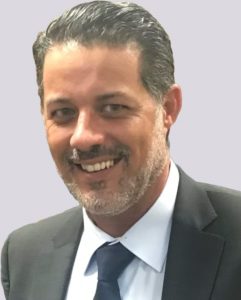
It’s no surprise the COVID-19 pandemic has increased the demand for hygienic best practices around the globe. With senior citizens being one of the most at-risk populations, it is vital for long-term care facilities to go the extra mile to protect the health and well-being of their residents and the doctors, nurses and staff providing their care.
Having effective and efficient laundry capabilities is an important component to ensuring that your facility’s cleaning processes are meeting the moment.
When reviewing your facility’s laundry capabilities, it’s first important to understand what “hygienically clean” entails. TRSA administers quantitative, third-party certification programs including a “Hygienically Clean Healthcare” certification, to ensure materials and textiles are being properly disinfected when laundered. Hygienically clean is enabled by a combination of several factors that involve the environment, process and handling. As far as the laundering process goes, physical agitation, a chemical or detergent treatment, thermal immersive hot water and a time specification are the key elements.
Today’s washing machines should feature high temperature disinfection programs, which are ideal for long-term care environments. But while high temperatures help disinfect textiles, the ability to hold that high temperature for a specific amount of time is critical. Specifically, the temperature should be held as high as 160° F (71.1° C) for up to 25 minutes, which satisfies Centers for Disease Control and Prevention requirements for thermal disinfection.
As an alternative for textiles that can’t withstand this high temperature or time duration, chemical/thermal disinfection can be used. This is a combination of hot or warm water and chemistry at lower temperatures that should be held for at least 10 to 15 minutes. Narrow temperature variations of 3° F up or down allows thermal disinfection or chemical/thermal disinfection to be achieved very easily and accurately.
Next, it is not only imperative to ensure patients’ clothing and everyday linens are clean and free of bacteria, but to also prioritize the cleanliness of mops and materials used to clean the facility.
Clean and efficient
As far as cleaning materials are concerned, microfiber is proven to be more durable and effective in removing debris and bacteria than other fabrics. Microfiber is designed for repeated long-term use, and in cleaning applications microfiber mops are typically considered more economical because they last longer than non-microfiber, string mops and similar products.
However, in the reprocessing and disinfection process, traditional washing machines, gas dryers and sometimes harsh cleaning chemicals can prematurely break down the fibers, drastically reducing the lifespan of the mops and shortening the length of effective use. Specialty commercial washing machines and dryers have unique features and are totally programmable to maintain the integrity of microfiber in order to prolong the length of viability for everyday textile items like microfiber mops.
By increasing the length of use for mops and other everyday use textiles, facilities can reduce purchase quantities, which saves money and improves EVS processes.
Facilities can also reduce their waste, both in the mops themselves as well as water pollution. Microfiber is a known contributor to plastic pollution in water, and by using machines that reduce the fiber breakdown, facilities reduce their environmental footprint and overall waste. Wet care machines are also capable of processing other items managed by EVS teams, such as slide sheets and cubicle curtains, further increasing the length of viable use and impacting a facility’s bottom line.
It is important to view washing machines as an investment, rather than an expense. With increased hygiene and disinfection demands, buyers should do their research and look for a washing machine that offers a high total return on investment. And while price is an important consideration, it doesn’t reflect the total cost of ownership.
Machines that feature short cycle times can significantly increase laundry throughput, while simultaneously reducing energy and resource consumption. Reducing service calls and ultimately replacement costs is also critical. Be sure to look at the manufacturer’s track record and have confidence that their machines have a reputation for high quality engineering and design. The best machines are engineered to preserve the long-term quality of clothes and linens and to prevent deterioration over time.
Whether a facility is updating their on-premise laundry capabilities to include new machines, or bringing outsourced services in house to utilize new technology, the cost savings realized through one item like microfiber mops can have profound and positive long-term effect on their overall budgets.
At a time when it matters most, investing in wet care machines will ensure all textiles are hygienically clean; save facilities money when compared to outsourced services or disposable options; reduce shrinkage, fiber damage and material costs; all the while conserving energy and water.
Paulo Rocha is the Head of Sales of HCS Business Unit in the NAN Region at Miele Professional USA. Miele is a leading manufacturer of commercial products for industries using commercial laundry technology, commercial dishwashers, laboratory, medical and dental technology. Rocha is an experienced sales consultant and a specialist in laundry and dish care, providing expertise in thermal disinfection for healthcare, hospitality, veterinary, marine, and emergency services.




